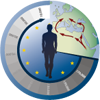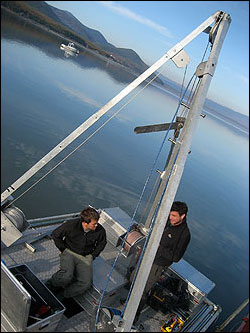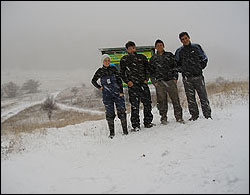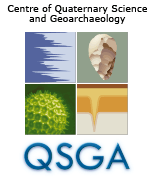Our fieldwork at Lake Prespa, a transboundary lake of tectonic origin situated at an altitude of approximately 849 m asl, took place between October and November 2009.
Two cores (Co1215: length 15.75 m, and Co1216: length 5.74 m) were successfully retrieved from a floating platform. The longest core (Co1215) was investigated using geophysical (magnetic susceptibility, XRF), geochemical (CNS), ostracod and pollen analyses. For the determination of the core’s age, bulk material was sampled along with plant, shell, and fish remains. In addition to the 14C dates, distinct tephra layers recognized throughout the core were used to establish a robust chronology. According to our model, the record from Lake Prespa reaches back to ~ 80 ka calBP, and therefore includes the entire last glacial period. The Balkans is one of the key locations/gateways in the eastern trajectory of modern human migration to Europe. The Prespa record can therefore offer valuable information regarding the environmental factors that facilitated or hindered the expansion of modern humans out of Africa.

















